John Hurrell – 10 July, 2012
The trouble is Allen's painted images look too much like Colin McCahon meets Nigel Brown. Such manuality - overt mark making - is not normally associated with Allen, though he has shown the occasional drawing or photo-enlarged collage. Any confusion the viewer might feel in this Lett show - especially if they are familiar with Allen's very best works, is multiplied if they see the other 1998 painting (The First Three). Allen has no unified stylistic voice as a painter and it is a mistake to show these works.
Jim Allen is a revered seminal figure in Australasia because of his bold introduction and nurturing - during the seventies - of installation and performance art at Elam. At Michael Lett this artist/teacher (at the age of ninety - hence the great title) is currently presenting a mixture of sculpture, film stills and (surprisingly) painting: some that is recent, or from 1998 - and one work remade from 1970.
The oldest piece, the sculpture Arena (1970) seems particularly apt today as a protest against oppression and internment of political prisoners. It is based on a cross system of metal supports lying on the floor, from which spring three groups of vertical struts. Between these are strung strands of tight barbed wire that make up three concentric enclosing rectangles of different heights. Over the lowest innermost one is placed clothing donated by family and friends that neutralises the razor sharp spikes.
However Arena is more nuanced than what it first seems, being not so much about fascistic brutality as communities of love and support that provide comfort, moral strength and loyalty to counter it. It speaks of bodily containment accompanied by soaring mental freedom.
The second part of this show presents a recent sculpture, and pairs of photos and paintings that have strong symbolic connections with the work included in Natasha Conland’s AAG Made Active exhibition, namely Hanging by a Thread II (2009) with its related photographs (like bandaged trees) and objects on stands.
The sculpture (Rio) shows a porcelain marionette held high off the ground with one leg caught in a vicelike clamp, her exuberant golden outer garments scattered rumpled on the ground and encircling on four stands, blue images of orifices from a giant head (mouth, eye, ear, nose), coolly observing. Symbols of a gloating media perhaps.
This work and the three nearby wall pieces (arranged configurations of paintings, photographs, diagram and rubbings) seems to comment on the role of the individual versus that of the wider community or nourishing state. There are lots of trees with leafless branches that could also be sucking roots.
Of the wall clusters that use 2-4 images, the solarised documentation photographs with polemical diagram work best. Allen is not a natural painter (he lacks a developed ‘language’) so his images of collective trees look like a clumsy hybrid of Leger with Kostabi. It is not that they are technically inept. It’s just that they are eclectic and aesthetically clumsy.
The third part of his show accentuates this point: On Reading Redemption Songs is a suite of eight paintings made in 1998, inspired by Judith Binney’s wonderfully detailed, incredibly researched book about Te Kooti Arikirangi Te Turuki, legendary guerilla leader and founder of the Ringatu religion.
Many artists in Aotearoa have been sufficiently excited by the Te Kooti saga that they have made work alluding to his life or his spiritual cosmology/symbolism. The list includes Laurence Aberhart, Paratene Matchitt, Leigh Davis, Colin McCahon and Shane Cotton.
The trouble is Allen’s painted images look too much like Colin McCahon meets Nigel Brown. Such manuality - overt mark making - is not normally associated with Allen, though he has shown the occasional drawing or photo-enlarged collage. Any confusion the viewer might feel in this Lett show - especially if they are familiar with what I think are Allen’s very best works, O-AR Part 1 (1975, 2007), Poetry for Chainsaws (1976, 2006, 2007) and Small Worlds (1969-70, 2010) - is multiplied if they see the other 1998 painting (The First Three). That is like some elements of the recent wall works, which as I’ve said, look like Kostabi / Leger hybrids. Allen has no unified stylistic voice as a painter and his take on Te Kooti here is not sufficiently unusual to be of interest. It is a mistake to show these paintings, though thematically they fit in with the rest of the show.
Therefore it is the two free standing sculptures that are the engrossing pieces in this exhibition, though Rio, compared to the larger Arena, is a little twee. There is also one solarised photographic work that extends Hanging by a Thread II by incorporating a societal/symbolic hand diagram borrowed from activist artist Conrad Atkinson. It is the best of the wall works because it has no painting. Well worth a visit to Arch Hill for these three.
John Hurrell
Recent Comments
Ralph Paine
Like a good theologian you assume that all demons are evil.... There are all kinds of Animal spirits living in ...
Tony Green
Persuasion, Hurrell style:"I like because I like because I like -- I can't say why -- & does that matter?".
Roger Boyce
You are indeed a patient man, Hurrell.


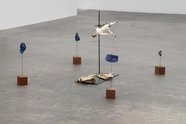
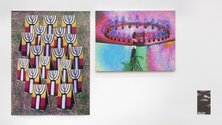
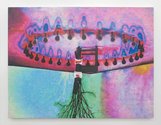
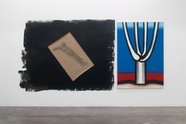


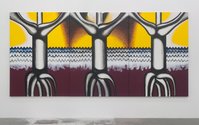
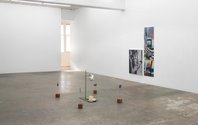




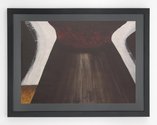
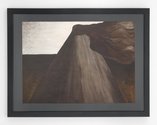
 Two Rooms presents a program of residencies and projects
Two Rooms presents a program of residencies and projects Advertising in this column
Advertising in this column



This Discussion has 22 comments.
Comment
Tony Green, 8:55 a.m. 28 July, 2012 #
1. It would certainly be 'a mistake' for anyone to show paintings, if all the criticism was of the hasty kind in this review. This criticism says "I don't yet know what to think, because I can see similarities to other painters' work, but haven't yet understood what these paintings are about'. And looking for resemblances doesn't greatly help, even if they are fairly obvious ones.
'Clumsy'? "Aesthetically clumsy?" What, if anything, does that mean?
Is this magisterial judgmental predication supposed to be intelligent criticism? [I thought the days of "I like nos. 3, 5, 7..." died when Gordon H.Brown stopped newspaper reviewing].
For my part, I do see a relation with Colin McCahon's painting, but in these paintings, especially the Te Kooti paintings, I don't see that as a bad thing. Largely black and white, simple workmanlike paintings - direct, modernist visionary - in keeping with the rest of the work in other materials.
On what grounds is some of Jim Allen's work singled out as the 'very best'? And why is that all 1970s work?
Maybe it would be sensible to try thinking about the relation of the imagery of the paintings to that of Jim Allen's work of the last ten years. And note that the show at Michael Lett's is composed of 3-d and a wide variety of 2-D media, and various conditions of imagery, of which painting is only one.
John Hurrell, 6:45 p.m. 30 July, 2012 #
Actually Tony, I spent more time than usual on this review, aware of Jim’s (understandably) passionate fan base but trying to articulate my disquiet about some of the works. Whatever the possible faults of my discussion around the two styles of painting and the photographic images, your dismissive comments about Gordon Brown’s reviewing are fortunately not matched by Victoria University’s commissioning lectures from both you and him to be published at the start of their Art History Lecture Series in 2003.
In other words he must have been doing something right, and assuming your description is accurate, I like him think it important to look in detail at individual works and to try to argue (if believed) for why some succeed and not others. I don’t believe some artists are geniuses who hit gold every time – who are beyond criticism. Trying to understand one’s ambivalences (arguing for one’s subjective likes, dislikes or combinations) is the most interesting and responsible thing a writer can do: articulating the encounter with particular works.
Those Te Kooti paintings of Jim’s remind me of the (to me) ‘clunky’ McCahons included in ‘A Question of Faith’, paintings which had never previously appeared in ‘Gates and Journeys’, ‘I Will Need Words’ or earlier surveys, escaping the ‘official’ corpus up to then I think for good reason – they look comparatively clumsy. The visual component counts. My view is all art needs a carrot in the form of a physical or mental image to draw the audience in so they attend to the details closely.
Assuming you disagree, I’m curious to know if your enthusiasm for the On Reading Redemption Song works extends to say the treebased images of The First Three and Beyond The Real as well? Whatever Jim’s intentions, does the conceptual (social) content alone of these works decide your assessment, determining your response, without considering the non-symbolic or non-narrative quality of image? Somehow I doubt it.
You ask about my list of ‘very best’ Allen works and the lack of recent entries. Some later works were included, but not the ‘remade’ Contact performances which I felt (at Artspace anyway) were marred by the dominant presence of the cameraperson and Jim’s greater bodily involvement in the work. The content seemed to have changed (his right to do so, of course) but confusing for those trying to understand the original project.
Maybe you are not referring to those works at all but to Hanging by a Thread II (2009)? If so, yup, I agree, it is important. But that question (your indignation at apparent omissions) would imply that you have been buying into the Gordon Brown approach all along. Perhaps I am mistaken but I doubt whether you claim objectivity, and that you (like me and Gordon Brown) argue vehemently to justify your likes and dislikes – your taste. Or did Gordon never attempt to justify his taste at all? Was that your point of issue?
Tony Green, 8:27 a.m. 31 July, 2012 #
I guess you never read Gordon H Brown's newspaper reviews. Isn't it your job to inform readers of what they might wish to go to see?
Or is it really your job to sit in judgment over artists? Perhaps given your view of your position as judge of quality, you should really go to their studios and show them how to do their job better.
John Hurrell, 10:49 a.m. 31 July, 2012 #
I see my role as to try and make public conversations about art that usually stay private. There is so little open discussion in the art community and online facilities are incredibly more efficient than hardcopy. It is not so much judging as expressing an opinion so it become the 'first word' not the last. Hence the value of people like yourself responding.
Tony Green, 10:52 p.m. 31 July, 2012 #
ok so you see your job as giving opinions -- that accounts for any amount of brief & largely inscrutable pronouncements outside any context of thought --
so you get the first word [one damning word, maybe] -- before anyone can formulate their own view, you are pre-empting that process --
& no doubt there are plenty of people who will take your pronouncement as authoritative & expert -- isn't your website still funded by Creative NZ?
you still haven't accounted for pronouncing paintings 'aesthetically clumsy' - what does that mean? -- you don't like something about them? maybe you favour something else in paintings [what? & why?]
& why does it come down to likes & disliikes, -- 'aesthetics' as a matter not of thought, but merely of taste? [aka opinions] That is no basis for an argument to which anyone can respond.
& maybe you've missed the point of these paintings which are it seems parts of a broader scheme, an ensemble, involving a variety of media -- -- & some very particular hanging -- 'upside down', diagonally , low on the wall -- is it 'about' media
& you say the paintings are 'eclectic' -- I guess this is because of the 'look-alike' remark that they resemble two other painters' work -- 'eclectic' is supposed to be something bad? as it used to be in criticism that worried about combining very different styles -- e.g. Raphael. Michelangelo & Correggio -- but it's your perception of two similarities, not of a deliberate attempt by allen to marry two styles.
as for the McCahon comparison, I guess you haven't noticed the differences -- & when you do you might think differently about them, instead of dismissing them as imitation McCahon -- simply put McCahon's notion of painting does not involve such evident material covering of canvas with dense smooth paint -- or such clear object-like figuration. I'd say very much sculptors' paintings.
John Hurrell, 12:54 a.m. 1 August, 2012 #
The first word is only because there is so little discussion overall, Tony, and I'm sure other gallery visitors have plenty of views quite separate from of my own - not pre-empted by me. They are not sheep - their independent views are sincerely welcomed and easily presented here if they wish to air them.
Or would you prefer silence, a climate with no feedback at all? Surely it is better for the art community that there is debate. While I am the individual who propels this site along there are other diverse points of view to be found here. Lots of writers marching to different drums. Often the same artists get opposing critical receptions. Different cities, different reviewers.
Anyway, be it ideas, symbolism, political content, the shape of an image, a colour - it is all opinion is it not - and as such, aspects of the artist's decision-making process to which an articulate person can respond, but which ultimately as argument can never be objectively verified. Is there a split between visual and ideational properties in terms of what is worthy as a basis for conversation? What if analytical thought is really an attempt to justify our taste after the fact? Reason backing up emotion and intuition, not vice versa. Cognitive science seems to support that with Damasio, Jackendoff, LeDoux etc.
You said earlier you saw a relation between the Te Kooti works and McCahon's paintings (not seeing that then as 'a bad thing') but now you backtrack. Other NZ artists on the same (eclectic) path - like Parker, White, Brown etc - would you treat them so sympathetically? Or is Jim a different sort of artist - beyond rebuke? If you didn't know who painted those works would you say the same?
Tony Green, 7:33 a.m. 1 August, 2012 #
I'm not back-tracking abt Jim Allen's painting & your labeling it 'eclectic'. I'm saying you're muddled abt that.
& I'm still waiting to hear what you mean [in your considered 'opinion'] by 'clumsy aesthetically' ?
John Hurrell, 8:26 a.m. 1 August, 2012 #
What I'm saying is that the way you write about what you see as Jim's 'differences'implies you think he is really far less McCahon based than you first admitted.
Aesthetically clumsy is exactly that. Visually awkward, ungraceful, inelegant, oafish etc. Chiefly because of his painted colour I think, as in The First Three and Beyond the Real. It goes back to the carrot thing...what is there to draw you closer?
You I believe would say 'context: Jim's history' - but I don't think that is sufficient.
Now I think it is possible to have those negative attributes in a work and have it still succeed, but that would require a certain obvious wit in the imagery because of content. Maybe it is there and I just can't see it?
Tony Green, 4:45 p.m. 1 August, 2012 #
You twist my words. re- McCahon. Scroll back & look.
So now it's [at last] a little bit clearer that in your 'aesthetic' you want gracefulness & elegance. & this is bad because 'oafish' etc & you'd better start noticing that Jim's sculpture is very little to do with your criterion.
But all in all you thought a great deal about the Jim Allen fan-base, as you said, -- & this is to tell them that he isn't perfect? -- or do you enjoy trying to down artists who've had long [& difficult] careers -- who've ben accorded some degree of critical celebrity?
it would have been better to take more thought about the show, rather than abt the 'fan-base' -- instead of this headline attack on Jim Allen's painting. Oh dear, it's new & you haven't seen any before. [Easy way out is to condemn it, with some ridiculous claim to having better taste than the artist & better taste than his fan-base. Of course, to call critics & historians 'fans' treats them like screaming 14 year olds greeting a pop-star at an airport. And it makes you sound like a grumpy old schoolmaster. ]
His painting doesn't meet the gracefulness test --so we go from 'I don't like' to 'clumsy aesthetically' [another version of don't like, a smoke-screen] to another version of 'don't like' [which is now attached to a 'quality' gracefulness'] -- well thanks, glad to know, your dogmatism about a quality so ill-defined and elusive that the a critic can chuck it about any old how. It's just a matter of taste, all over again.
& other artists will be glad to know that your derogatory remarks come from an unstated Classical Beauty criterion --- like a good 19th century Academician [which wd count out Romantics, Barbizon School, Manet & Impressionism & pretty well everything in the 20th century & delay for a century acceptance of Caravaggio.]
John Hurrell, 8:39 p.m. 1 August, 2012 #
Tony,'fan-base' wasn't a denigratory term. Far from it ..didn't I say 'understandably' in brackets? Besides I consider myself a fan too ..most of the time.
It doesn't have to be 'love all his work or none at all' does it? What's wrong with having ambivalences about an artist's practice. Expecting a totalising, blanketing Blind Faith would be oppressive, surely?
Tony Green, 7:45 a.m. 2 August, 2012 #
agreed
Ralph Paine, 1:56 p.m. 2 August, 2012 #
Question: how best to speak or act on behalf of those intimate strangers whom we adore; of those who have created the world afresh and cast us adrift in its lightness, its currents and eddies, its storms? They are famous painters, musicians, philosophers … And us? What possible thanks might we offer these grand midwives of our being-new-born? Thus, our complex dilemma; the dilemma of the fan, artist-as-fan. It is said that the fan has precursors—the spectator in ancient arenas, the eighteenth century fanatick, the maniac of 60s pop—and an etymological link with demons and temples (fanum). Perhaps then the fan understands the self to be a demon, or to be demonised by an-other, an understanding which would call forth the world as pure hallucination... An understanding which here I give thanks to.
John Hurrell, 2:15 p.m. 2 August, 2012 #
Lovely stuff Ralph. So you mean the world as Maya? How does the demonising an-other fit in that?
Ralph Paine, 10:56 p.m. 2 August, 2012 #
Maya is the illusion of perceiving fixed, proportional, and separate phenomenon, whereas hallucination is when all phenomenon are perceived as collective, swarming: Deleuze calls the later an "errant and even 'delirious' distribution ... (the One - All)" ... Selves, others, demons.
John Hurrell, 11:39 p.m. 2 August, 2012 #
So with the hallucination, where does the self (fan's self?) fit in? The demonised self?
Ralph Paine, 10:50 a.m. 3 August, 2012 #
McCahon sent the Master Allen a mirror. Allen held it before his disciples and said, "Is this McCahon's mirror or my own? If you say that it is McCahon's, how is it in my hands? If you say it is mine, has it not come from McCahon?"
John Hurrell, 8:02 a.m. 4 August, 2012 #
Does the mirror expose the demonic component of the self, Ralph? A poisonous, malicious element that accompanies even talk about the reflected hallucination?
Ralph Paine, 9:58 a.m. 5 August, 2012 #
Like a good theologian you assume that all demons are evil....
There are all kinds of Animal spirits living in the forest; the bestiary is large.
Tony Green, 12:52 p.m. 3 August, 2012 #
Hallucinatory may be the way to describe the offering of comments [whether of praise or derogation] in the name of nothing but an individualised 'liking' or 'disliking' -- that cannot answer to [or refuses to] any reason, or principle for its liking. If we all followed this way of responding publicly to art, the result is a consensus view based on counting everyone's votes. That would include the large number who are indifferent and no doubt please the hostile opponents of anything new.
The utterly banal view of reviewing on this website favours a status quo of mediocrity in the arts, [as it would favour the status quo in all kinds of thought including the sciences]. Is this really what Creative NZ would like to see take effect? Its claim to be egalitarian is plainly false, since such a view suppresses all attempts to 'open up the holes in the status quo' for new thought. Often initially unpopular art is that which turns out to be the most effective & useful for all. A useful critical act would be to be in the advanced guard of those who look for & make known the new & effective.
John Hurrell, 10:31 p.m. 3 August, 2012 #
With that liking and disliking Tony I advocated attempting to persuade, trying to reason a case but knowing there can be no firm foundation underneath. The pleasure is the exchange and comparison of opinions and arguments - attempting to justify one's taste while knowing there is no objective base.
Since when has EyeContact turned down writers wishing 'to make known the new & effective?' It has always encouraged the publication of diverse opinions and such contributors would always be - and still are - welcome.
Roger Boyce, 4:49 p.m. 4 August, 2012 #
You are indeed a patient man, Hurrell.
Tony Green, 10:12 p.m. 4 August, 2012 #
Persuasion, Hurrell style:"I like because I like because I like -- I can't say why -- & does that matter?".
Participate
Register to Participate.
Sign in
Sign in to an existing account.